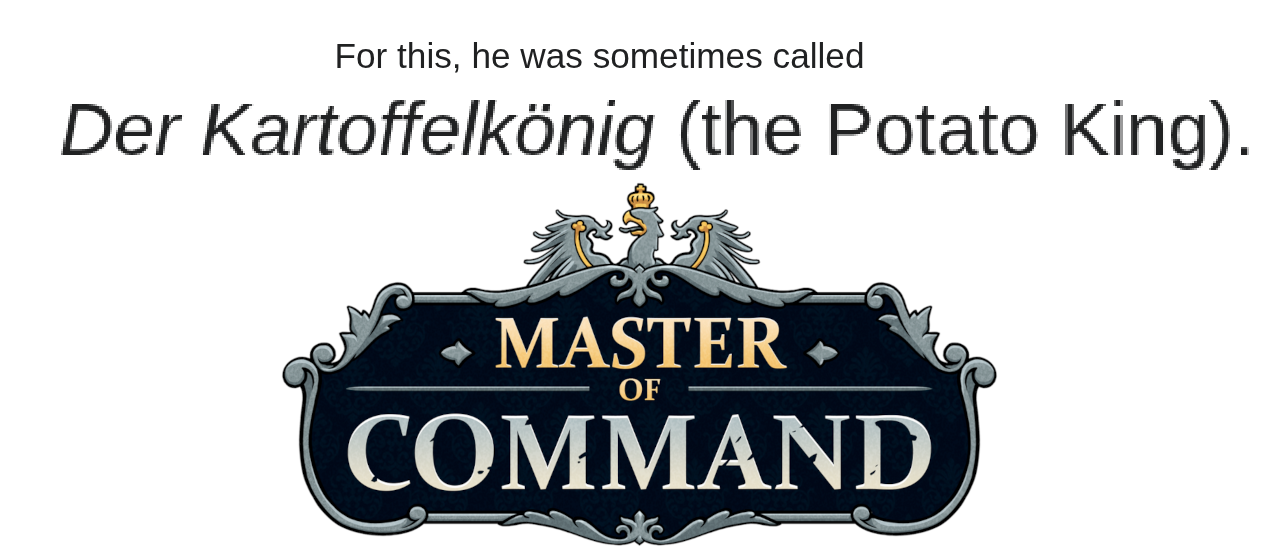This review came about solely ‘cos I watched the Master of Command developer videos. Previously, I did’t know anything about the Seven Years’ War, nor was I an Armchair Historian follower. But I was mildly interested in Fire & Maneuver, his previous title, and liked what I saw in those recorded dev streams. This encouraged me to beg for a game key. It was graciously provided and I immediately ran into unforeseen problems.
Maybe I should have foreseen them. After all, I had just switched my gaming PC from Windows 10 to CachyOS. And as with any Linux distro, there’s no guarantee that a given game will work. With Master of Command, I was unable to hold right mouse button and draw to set formations. This, you may realize, is somewhat important in black powder warfare.
I wasn’t the only one – folks were already complaining on Steam. I for one bitched to Mr. Historian himself. However, a team of four could hardly spare the time to make a Linux-compatible version. Still, one of the lads managed to implement a solution quite soon; an imperfect one that demanded more efforts from the user. This worked well-enough for me.
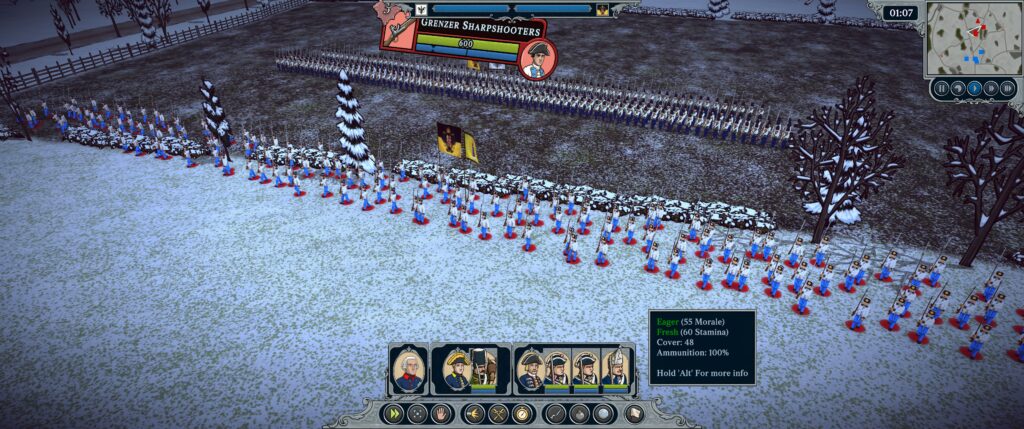
Then a Steam user said (paraphrasing there) “somebody should do something, and by something I mean open a github ticket for Proton, Valve’s compatibility layer for playing games on Linux”.
I was that someone. I jumped through the hoops and filled the report. The Proton devs quickly got back to me, I enabled the bleeding edge version of Proton Experimental… and the game worked perfectly! I wasted no time in swelling with unearned self-importance as well as lofty dreams ideas of making the even-more-unreleased-yet Flashpoint Campaigns: Cold War working without any visual issues.
Ahem.
Remember when this was a Master of Command review?
Self-aggrandizing anecdotes done, back to the game. Master of Command is set in the European theater of the Seven Years’ War, the 18th century Great Power tossup between France and Austria on side, Great Britain and Prussia on the other, and basically anyone else that matters falling into one of the two camps. Russia, notably, managed to be on both. Seven Years’ War is notable for massive changes in the colonial domains outside of Europe, but they remain outside the scope of the game.

Here I tell you that I reshuffled the review a few times to put the emphasis on real-time battles earlier, because it is the star of the show. Sure, the campaign gives them context, but no context in the world can save you if the battles aren’t fun. Good thing they are fun!
If you’ve played a single Total War game, you know what to expect: you order units, they respond immediately and perfectly, and go on to their deaths. Since everyone’s totting a musket, your job is to put them into the best position to shoot the enemy without getting shot. To that end, the battlefields are littered with towns and villages and fences and forests that will provide cover for some fancily dressed lads. Ignore them at your own peril.
(Master of Command solves the perennial Total War pathfinding issues having units just phase through any object on the field.)
The bullet’s an idiot, the bayonet’s a fine chap, the quote’s anachronistic
Your goal is to combine shock and casualties to make a unit retreat – you’ll see their morale and break points clearly on the unit banners. So while just standing there and shooting long enough might work, you may instead try to give them the ol’ Cossacks 2: European Wars treatment:
- Let the enemy shoot you at their farthest range.
- March close while they’re reloading.
- Fire when you’re at point blank range.
- CHARGE, ideally before they have reloaded.

So while units will automatically fire at each other, the game gives you the controls – such as trading volley fire for individual – and the incentives to do some slight (and satisfying) micro. Few things are as pleasing as noticing an approaching a cavalry unit, disabling Fire at Will, waiting until the charge is almost connecting, firing, and then seeing the horsemen not only go into the retreat stance, but straight up shatter (which is an uncancellable state that ensures they won’t get back into the fight).
Of course, there are more subtleties to the morale system, including some sort of proximity bleed from seeing friends rout or artillery getting skittish the moment they realize they don’t have any friends between them and the enemy, but just the bare basics work fine.
Plus, there’s always fun, if slightly gamey, stuff like having a veteran artillery unit armed with atrociously expensive cannons snipe the enemy batteries. A much safer counter-battery option than the ol’ cavalry flank. Plus, a retreat-shatter is even sweeter if you can achieve it without leaving your deployment zone.

And for most of my 35 hours with the game, the AI was perfectly willing to let you do that, obligingly marching out to attack you. But the recent patches have made it act a lot smarter, sometimes being perfectly willing to let you come to their deployment zone while enduring a rain of shells. The AI is also now coordinating multiple units into a cohesive battle line. It may even be that the CPU is no longer very hype to charge cavalry straight at a formed firing line… Man, if only this patch had reached the Light Brigade!
Oh, and the player has a secret weapon: their general unit. The general has their own tiny cavalry squadron which can be used to break a wavering enemy unit in a pinch, but their main use is zipping around to boost morale and chase down routing friendlies to get them back into the fight. It’s like Medieval 2 again!
It is well that the war is so beautifully rendered, otherwise we might want to play it
All of this is better than it sounds because it looks great. Armchair History Interactive is four guys, but they have husbanded their resources well. Master of Command, while stylized and not approaching AAA titles in technical quality, looks great. Any time you watch a unit fire, the guns going off slightly out of sinch (you’re not commanding robots), seeing individual muzzle flashes, and the smoke form… Beats the shit out of anything Total War: Warhammer can put out. Low bar, since that game had to be modded to not give arrows badly-drawn white trails.

I love watching charges, I love watching units reform from line to column, I love the little horses running away as cavalry takes casualties, I love seeing artillery balls skip along the ground…
Meanwhile, the rest of the game, from UI elements to the rare cutscene and random encounter illustrations, are done well in that cartoony Armchair Historian style. I love all of it, and it gives the game a very distinct feel. Judging by the screenshots, Fire & Maneuver looked better only in one regard: the cute animal mascots representing the nations.

Anyone who doesn’t like how the game looks is objectively a philistine and a baby. Master of Command beats out most of its peers outside of, maybe, Ultimate General. If you want AAA visuals, then damn, maybe buy the game once for every casualty of the Seven Years’ War to provide funding???
Wasn’t there something about Silesia?
But fun, pretty battles aren’t enough to make a game (ooh, a callback) – otherwise, it wouldn’t have taken Field of Glory: Kingdoms to get my Field of Glory 2: Medieval playtime to 35 hours. So, there’s a short and linear rise of Frederick II mission set, but the real star is the rogue-lite campaign. It’s split into three Acts, the goal of each being the defeat of enemy HQ, which sits at some corner of the campaign map, drawing power and waiting for the timer to run out.

The player must choose a nation with its own overarching trait, as well as a “subfaction” that has a further specific trait. There are five nations – Prussia, Austria, France, Russia, Great Britain – with three subfactions per. Each subfaction with a fixed collection of starting units and some items to kit out your starting units.
For example, if you choose Russia, you’ll get the Hungry Bear trait, which increases Provision (food) use, but also improves settlement raiding efficiency. Then, if you choose Imperial Army (I swear, it was previously called “Feudal Levies”) as your sub-faction, all recruit-level units will be cheaper during the campaign.
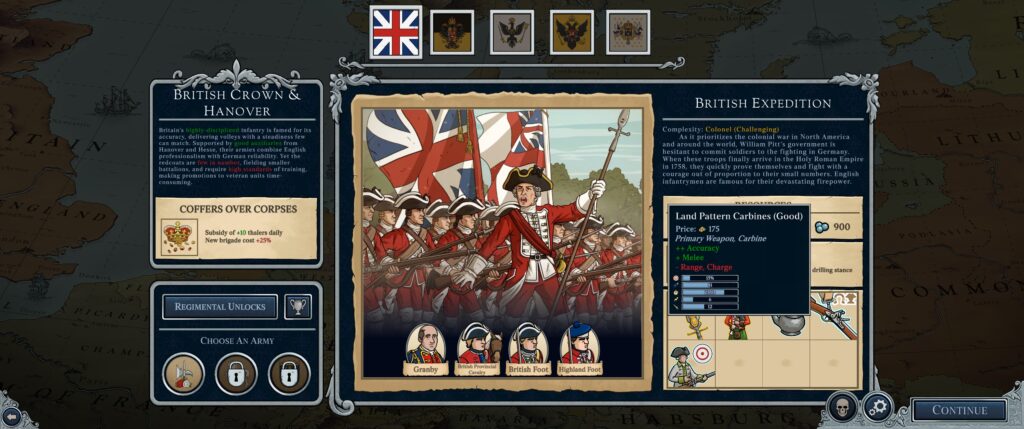
Other subfactions are unlocked by beating the first act and the campaign respectively and can shake up things massively. The Cossack Host, the final Russian unlock, has the Hungry Bear trait as part of the Russian faction, but instead of of cheaper recruits, it has a bonus to post battle loot combined with a constant drain on your money if you’re not raiding towns or force-marching. Oh, and you starting army is composed of four squadrons of Cossacks, for a total of 1600 men, or the same as a single French Royal Recruit regiment (admittedly, French have the largest). Oh, an no firearms.
The Cossacks enter the black powder-smoke covered battlefields of the Seven Years’ War without any guns.
Naturally, such an army works very differently! And even if recruiting during the game can make it more normal – cavalry is harder to come by and more expensive than infantry – you will still have to abide by the marching–and-raiding. I tried playing with it and the speed was like nothing else.
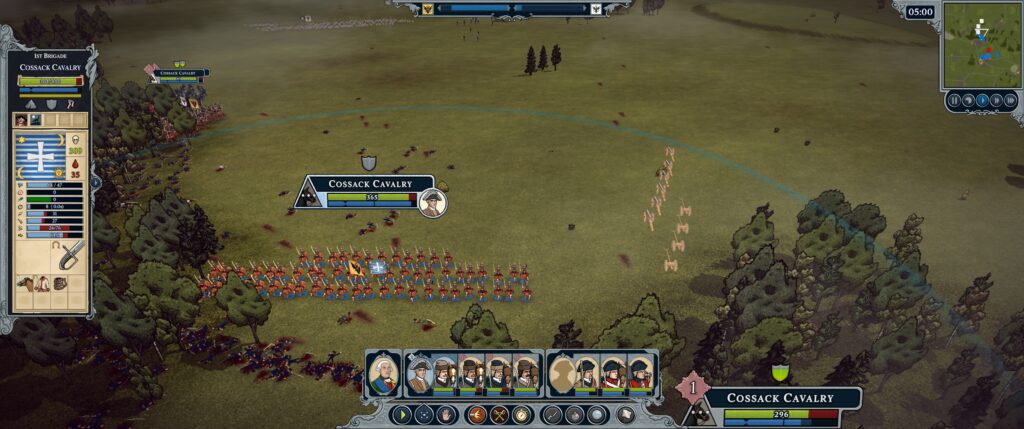
So, after you choose your nation and subfaction (and set your difficulty modifiers, and switch to Ironman), you get the choice of one of three regions for Act I in and the associated benefits for side-quests: a unit and a doctrine.
The choice of region is mostly cosmetic (determines the names of cities and towns), the important part being the nation (or nations) you’ll be facing. By default, you’ll only get the nations your faction fought historically, but you can tweak it for fun.
Campaign maps are silly with roads, woods and other terrain that may help or hinder your army. They’re guaranteed to have towns cities for buying Provisions (food), Reservists (unit replenishment) and Ammo (ammo replenishment) as well as hiring units and trading items.
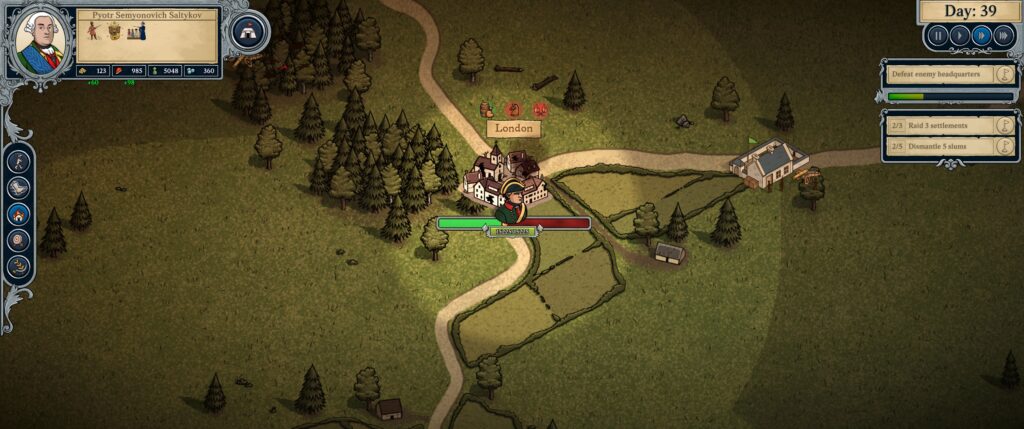
There are also many more optional encounters strewn across the maps. Some, like Herds, are almost always beneficial. Other, like Forts, can be a drain on all resources, including time – but that’s appropriate, as Forts are one of the ways to earn Doctrines (army skills) while mucking about the campaign map.
The map also has patrolling enemy armies to make it fun. If you get powerful enough, they may even flee from you. And if you’re good enough, you may start seeing them as resupply points very soon. Very Total War-ishly, victory nets you not only money and goods, but also the choice of getting a) money and Provisions, b) replenishing your casualties and taking on Reservists (18th century being the peak of ho disloyalty), or c) gaining more experience and ammo.
Furthermore- look, this is getting a bit GameFAQ-y,and I’m pretending to be a real game critic. The campaign is fun, OK? You may win, you may lose, you may get chased-down by an army much bigger than yours. All of it is great, so instead of talking about unit and general level ups, unit items, and so on, I’ll talk about the Last Important Thing: customizing units.

For every regiment in your army, you can set their flag, combining a logo, two colors, and a background pattern. You can also customize how the guys look: previously, it was just for collars, but as of two patches ago, you can go wild on the colors of the entire uniform. I think it is a bit too much, but hey, it will appear not only on the unit portrait, but on the battlefield itself.
Oh, and you can naturally name the regiments yourself, replacing the default unit titles (“Cantonist Recruits,” “Prussian Fusiliers,” etc.) with what pleases your heart. Here’s a website where you can find historical unit titles, uniform colors and flags for Seven Years’ War, but nobody is stopping you from naming stuff after dumb memes.
Game good
All in all, I have no serious complaints about Master of Command. It’s an excellent game, well worth the cost (and the trouble of getting it running on Linux). Sure, it’s not exactly a hardcore title where orders get lost as the messenger sprite gets shot, but it’s good looking, easy to grasp, and, as patches dropped down to the very morning before release lead me to believe, an absolute labor of love.

